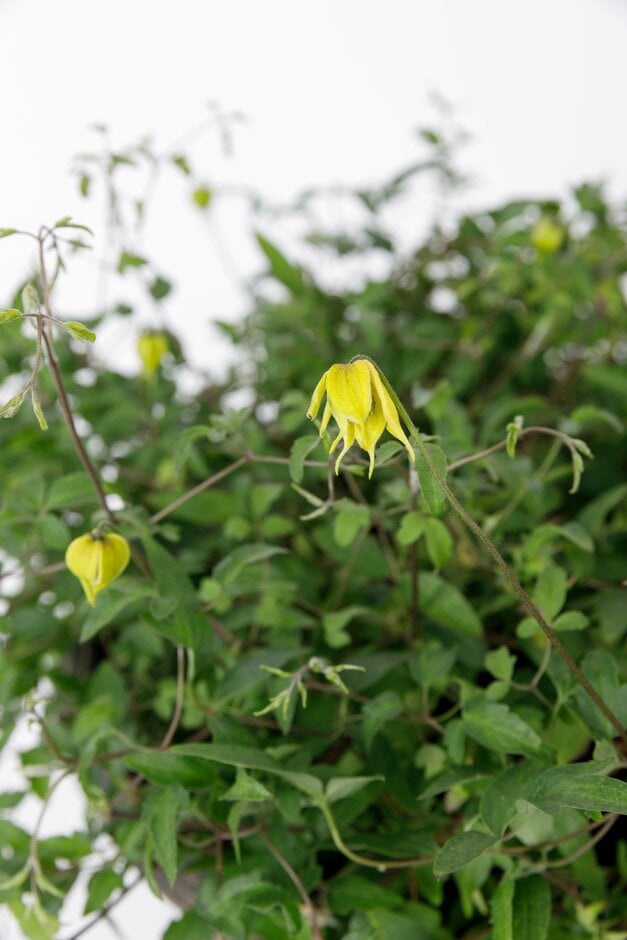Clematis Little Lemons ('Zo14100'PBR) (Ta)
clematis [Little Lemons]
A deciduous, bushy clematis with a very compact habit reaching a height and spread of 45cm. Its pinnate leaves are bright green and the small, nodding, bell-shaped yellow flowers are borne over a long season from late spring until early autumn; flowers from terminal buds are followed by fluffy seed heads

Buy this plant
Size
Ultimate height
0.1–0.5 metresTime to ultimate height
2–5 yearsUltimate spread
0.1–0.5 metresGrowing conditions
Moisture
Moist but well–drained, Well–drainedpH
Alkaline, NeutralColour & scent
| Stem | Flower | Foliage | Fruit | |
| Spring | Yellow | Green | ||
|---|---|---|---|---|
| Summer | Yellow | Green | ||
| Autumn | Yellow | Green | ||
| Winter |
Position
- Full sun
- Partial shade
Aspect
South–facing or West–facing or East–facing
Exposure
Exposed or Sheltered Hardiness
H7Botanical details
- Family
- Ranunculaceae
- Native to GB / Ireland
- No
- Foliage
- Deciduous
- Habit
- Bushy
- Potentially harmful
- Skin irritant. Wear gloves and other protective equipment when handling. Pets (rabbits): Harmful if eaten. For further information and contact numbers regarding pets, see the HTA guide to potentially harmful plants
- Genus
Clematis can be deciduous or evergreen shrubs or herbaceous perennials, mostly climbing by twining leaf-stalks, and often with showy flowers. Some have attractive fluffy seedheads in autumn
- Name status
Trade
- Horticultural Group
- Tangutica Group consists of deciduous climbers with ternate or pinnate leaves and small, bell- or star-shaped flowers appearing on the current year's growth in summer and early autumn
How to grow
Cultivation
Plant in a moisture-retentive, well-drained soil, with the roots and base of the plant kept cool and shaded by other plants or a layer of pebbles at the base. Plant with the crown 5-8cm (2-3in) deep to encourage new shoots to grow from below ground level. See clematis cultivation
Propagation
Propagate by layering or semi-hardwood cuttings
Suggested planting locations and garden types
- City and courtyard gardens
- Cottage and informal garden
- Patio and container plants
- Flower borders and beds
Pruning
Pests
May be susceptible to aphids, capsid bug, slugs and snails
Diseases
May be susceptible to honey fungus (rarely), clematis wilt and clematis slime flux
Get involved
The Royal Horticultural Society is the UK’s leading gardening charity. We aim to enrich everyone’s life through plants, and make the UK a greener and more beautiful place.